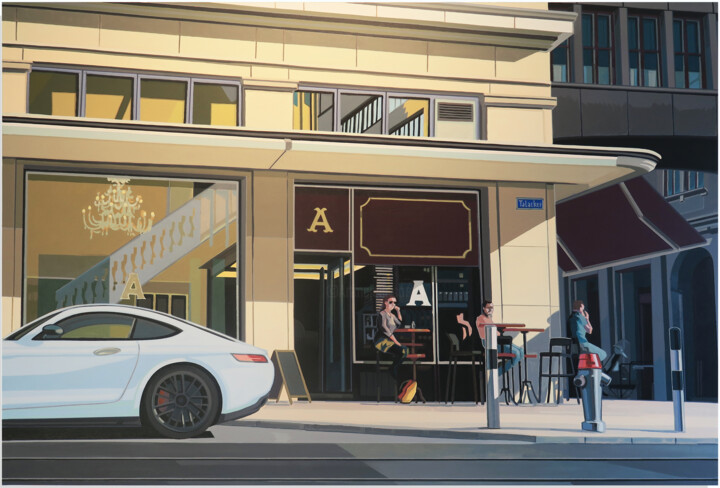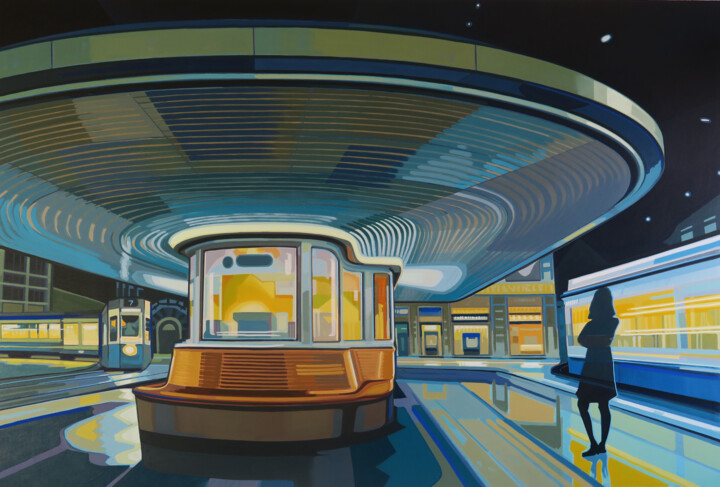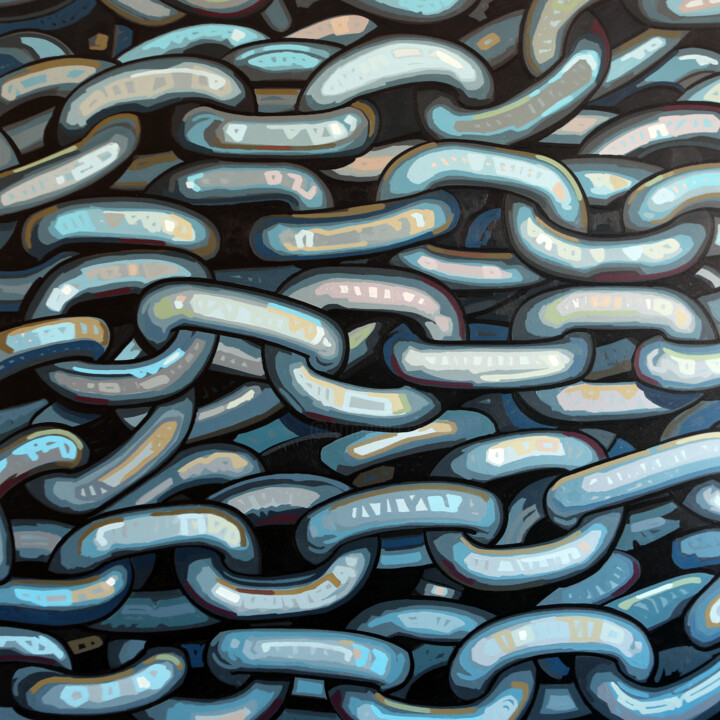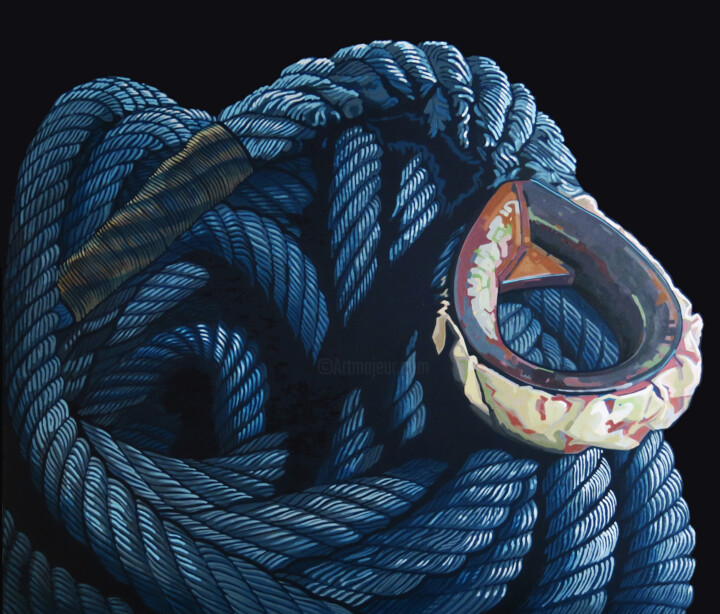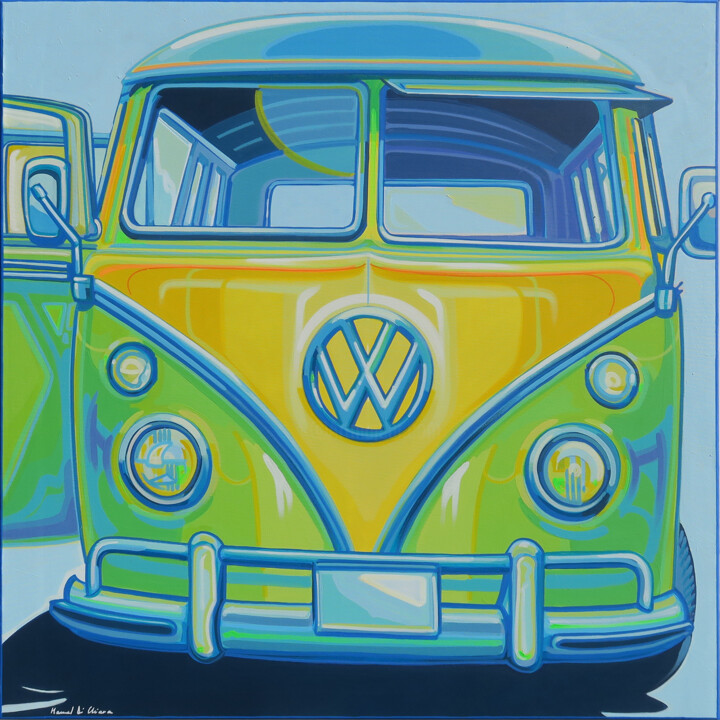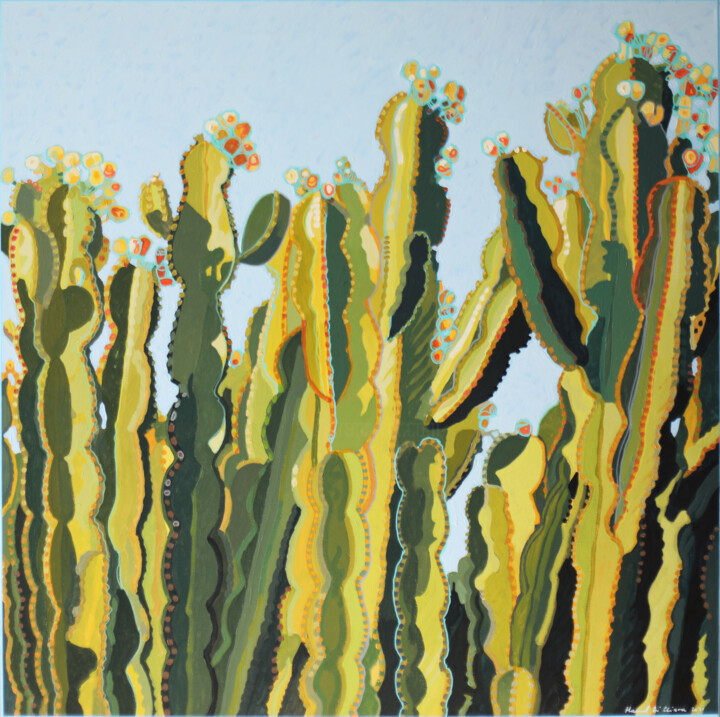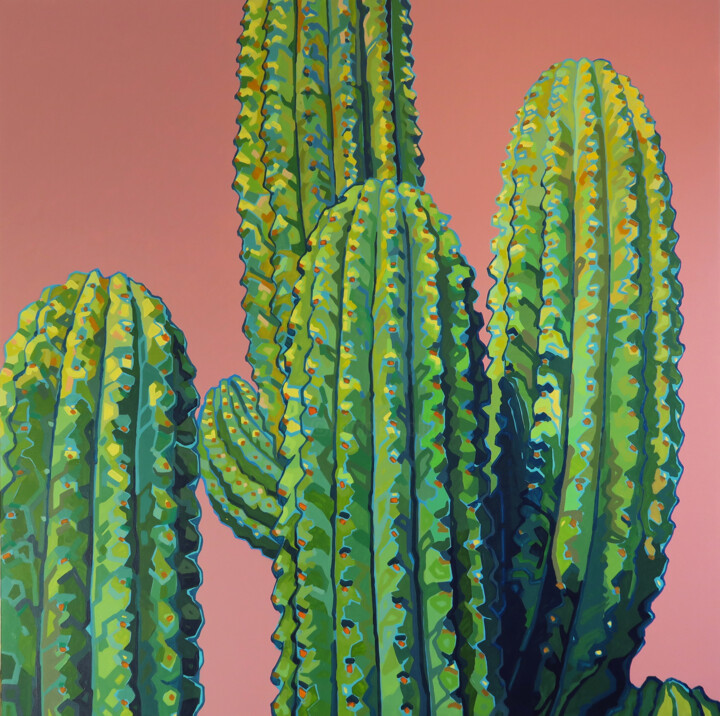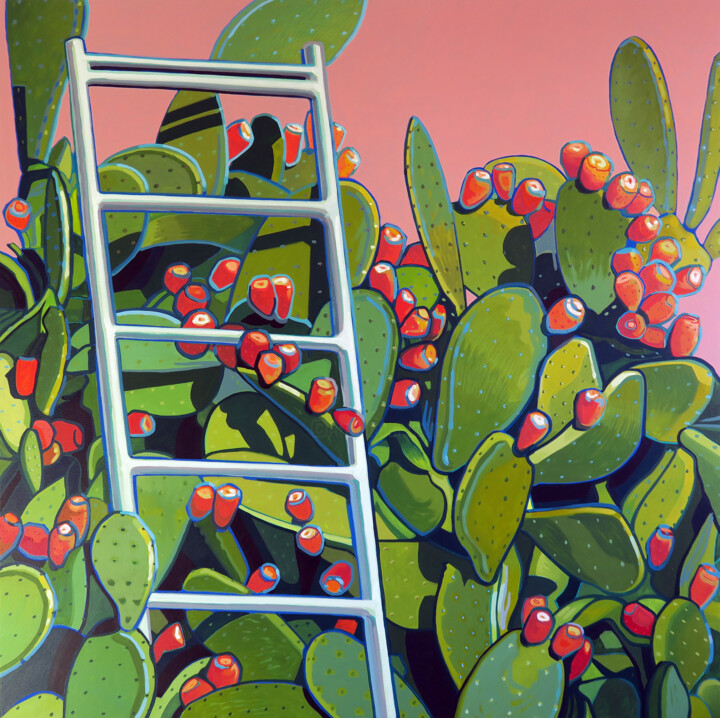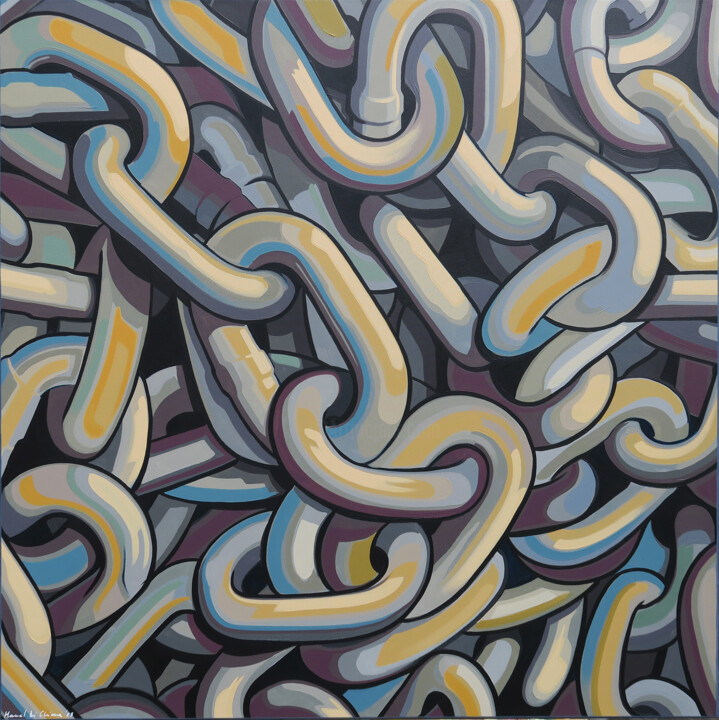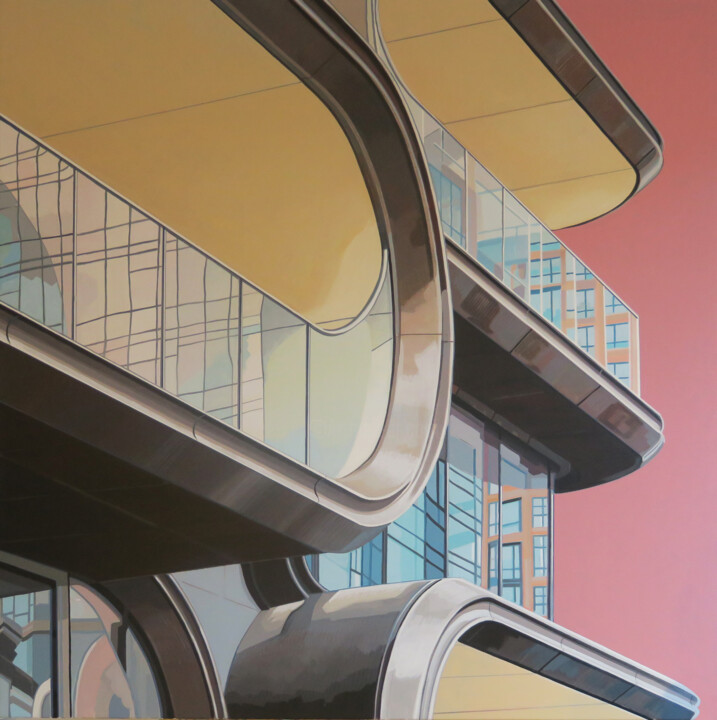What motivated you to create art and become an artist? (Events, feelings, experiences...)
I consider myself lucky because I had good art teachers from the very first schools and they are the ones who always encouraged me to pursue art studies. However, I was aware as early as age 14 that I was better at drawing than studying algebra! The choice, however, did not turn out to be one of the easiest since in the 1990s in Ischia, my beloved island, there was no art high school and therefore I was "forced" to reach the mainland with a 2.30-hour daily trip hopping between buses, hydrofoils, streetcars and long walks to reach the nearest art high school.
What is your art background, techniques and subjects you have experienced so far?
I attended the Liceo Artistico s.s. Apostoli in Naples finishing my studies at the Neapolitan Academy of Fine Arts in 2000. Enrolled in the decoration course I was able to attend the combined courses of printmaking, photography, sculpture, painting techniques, art history etc. gathering a wealth of technical experience that today is the basis for all my artistic achievements.
What are the 3 aspects that differentiate you from other artists, making your work unique?
I think that what may surprise an admirer of mine today is the differentiation of my artistic production. I offer the public works developed on different themes and with different techniques, going from "Mediterranean inks" to works on automotive themes in full pop style, to large format "cargo" canvases developed to tell the port world and then closing with urban visions that tell so much about my love for architecture and travel. This differentiation is the result of my studies and will surely lead to new contaminations between the various languages in my future works.
Where does your inspiration come from?
"Inspiration" is a word I have never liked, because it makes one think of an "enlightening" moment when the artist decides what to paint! The path leading to a work in truth is very tortuous and takes into account various factors and some questions such as -what do we want to communicate, what do we want to arouse in the viewer, what do we want to achieve-? It is up to us artists then to translate this into the work, trying to answer the various questions clearly, without unnecessary artifice, aiming straight at the solution to the problem, using the most appropriate technique, the most suitable format, the most appropriate tones!
What is your artistic approach? What visions, sensations or feelings do you want to evoke in the viewer?
A professor of mine at the academy used to make a point of teaching kids the difference between observing and looking. Observing the world around us means giving more importance to details, looking at even the simplest things with new eyes, perceiving their beauty! What I try to point out to my interlocutors is that even a rusty wall of a ship's side holds infinite beauty in itself, composed of dozens of shades of warm shades of reds and browns, just as a construction detail of a building can be just as interesting, or a reflection of a wake created by a moving car in a bar window! I think every day is full of almost cinematic moments, moments when the light is right, the atmosphere is right, the colors are right, and in my paintings I try to freeze these frames as well as a good photographer would do !
What is the process of creating your works? Spontaneous or with a long preparatory process (technical, inspired by art classics or other)?
I am often around town armed with a camera. I use it to take notes, as people once used to sketch I photographically record the subjects and moments that interest me most. Be they cars, bars, buildings or simply particular atmospheres, I take them with me at the end of the day, all to the studio. It is here that viewing the various files I discard and choose the best frames, which are then "cleaned up" or cmq recomposed using photo editing programs. Thus is born the compositional basis from which to create a new pictorial work. Once the canvas format is chosen, I bring back the subject in pencil and begin the various pictorial steps that develop in layers until the final work is composed.
Do you use a particular working technique? if so, can you explain it?
I love the versatility of acrylic colors but I often combine them with bases made of glossy enamel. I get in this way a contrast between the background of the subject that looks compact and shiny with the subject itself that painted in acrylics looks opaque. This kind of detail is difficult to appreciate in the photo of the work but in person it is a much appreciated effect!
Are there any innovative aspects to your work? Can you tell us what they are?
I use classical techniques in making my works, what may be innovative is their combined use. It is' easy to find a combination of acrylics, glazes and pastel-drawn details in my works.
Do you have a format or medium that you feel most comfortable with? if so, why?
In recent times I often use the square format, because I feel it is very concrete. The square is a perfect shape, it frames all kinds of subjects well and most importantly it forces me to focus on the focus of the subject. There is no room for unnecessary details, a square picture is like a fist, strong, clear and powerful!
Where do you produce your work? At home, in a shared lab, or in your workshop? And in this space, how do you organize your creative work?
One of my greatest desires has always been to be able to afford a professional workshop. I paint large-format canvases but also design inks on paper, do room set-ups, produce a line of eco-design furniture, frame prints, and personally package each sale. To do all this requires large spaces, and I am currently returning from an experience in Hamburg, where I was fortunate enough to share a large 120-square-meter studio with a photographer. At this moment in history, I am painting and working in a temporary large-scale studio in Ischia, my native island, with a view to a permanent arrangement, which could also be a house/studio in Naples.
Does your work lead you to travel to meet new collectors, for fairs or exhibitions? If so, what does it bring you?
My work leads me to travel mostly because of my search for interesting subjects destined to become works. I often travel to commercial ports, Hamburg, Amsterdam, Rotterdam are among the last ones visited and endless are the canvases born from these inspections. I am not currently fortunate enough to collaborate with any particular gallery, but I often personally take care of home deliveries of my works, and I place great value on meeting with my collectors. Those who buy one of my works are in tune with my world and often become good friends!
How do you envision the evolution of your work and career as an artist in the future?
I will focus more and more on painting, trying to stop accepting commissions that do not fit into my themes. I have worked for years on commissions, now it is time to devote myself to my own ideas and if on the way I should meet a capable gallerist all the better!
What is the theme, style or technique of your latest artistic production?
The city and its life, are among the themes most addressed in my latest canvases. Always in a figurative style, the canvases in this category tell the story of city living. They do so through the depiction of iconic buildings, historical activities, and scenarios composed of various moving subjects that wink at a certain American 20th century painting.
Can you tell us about your most important exhibition experience?
In 2019 during my first year in Hamburg, I had the courage to send an email to the director of the port museum with a rather ambitious request, to exhibit my canvases from the "cargo" series on the premises. Unexpectedly, the museum director responded by inviting me for an inspection. Within two weeks, a container was set up in the main museum hall in which 13 of my canvases from the ship series were placed. The exhibition was a happy experience, in a totally unique setting with visitors who loved the naval genre! Success.
If you could create a famous work in art history, which one would you choose? And why ?
"Nighthawks" by Edward Hopper is an inspiring work for me. The nighttime setting, the composition developed by combining the cool colors of the outside of the restaurant with the warm light of the interior, a "cinematic moment" that will forever remain one of my most beloved works.
If you could invite a famous artist (living or dead) to dinner, who would it be? How would you suggest they spend the evening?
I would gladly invite Wayne Thiebaud and ask him to bring one of his works with him so we could talk about painting technique, composition, and color, all accompanied by an Italian dinner and a few select friends!

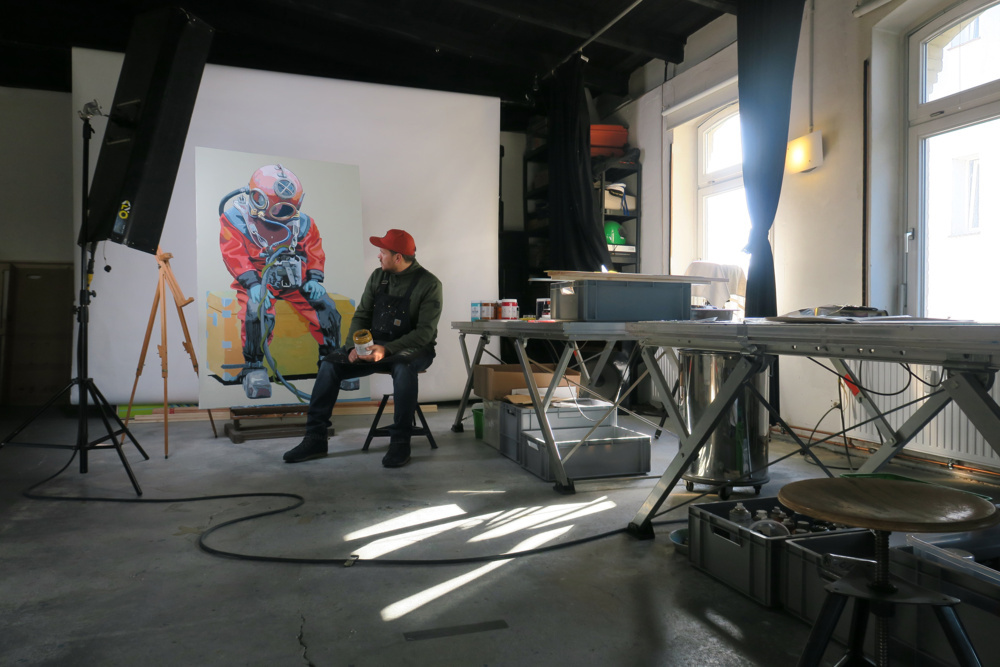




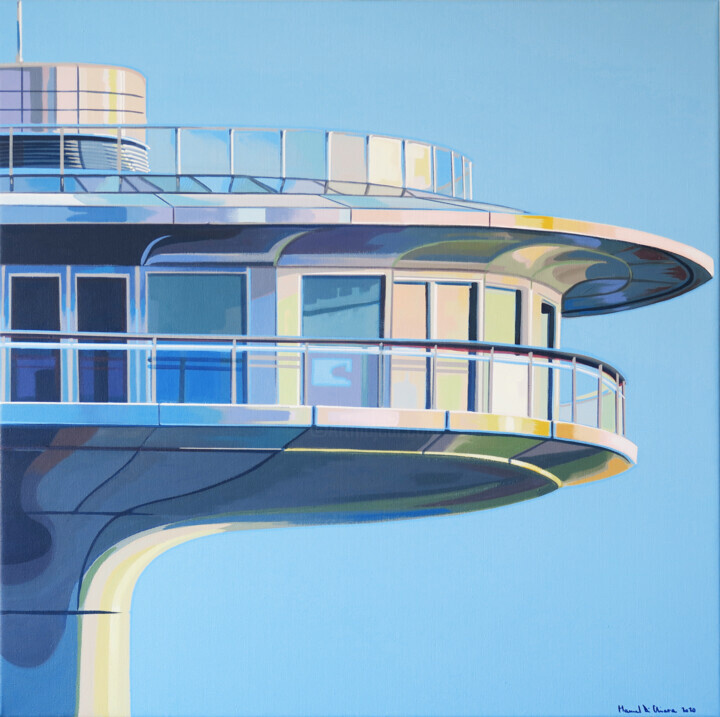
 Olimpia Gaia Martinelli
Olimpia Gaia Martinelli

